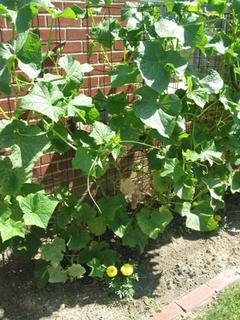Eat your fruits and vegetables........
I am NOT against farm subsidies. In fact, I am more concerned about farmers today than at any other time in the past. Last March our county celebrated Ag Day with meals and displays out at the County Fair Grounds. This focus on the farmers in our community is timely and needed. In this day and age, farmers are the neglected heroes of our land. I’ve heard farmers refer to themselves as gamblers. From year to year they gamble on the weather, the cost of their seeds, gasoline, chemicals, and the price of their commodities, never knowing for sure if they will make a profit or a loss. Many times they lose. And their loss is our loss. Farm subsidies are important to many small farmers.
Indiana grows corn and soybeans extremely well. There is interest these days in setting up a bio-fuel plant in Randolph County to turn those grains into ethanol. It has been difficult for me to think about food crops being turned into fuel when we live in a world where 24,000 people die daily from malnutrition or hunger. But I began to rethink my concerns after I read this article. I think it is more objectionable for good crops like corn and soybeans to be turned into high fructose corn syrup and hydrogenated soybean oil to make cheap, nutrition-poor food for people here in the United States. The fact is, Americans eat little corn or soybeans in their natural state. One day public pressure will change our subsidies to reflect the food pyramid and Indiana farmers could loose out. That should be a concern for all of us here in Randolph County. As we look seriously at gasoline approaching the $3.00 mark, using our land to produce a good, clean alternative fuel source is well worth our support and our government’s subsidies. That could be a real “victory garden” in our world today.


